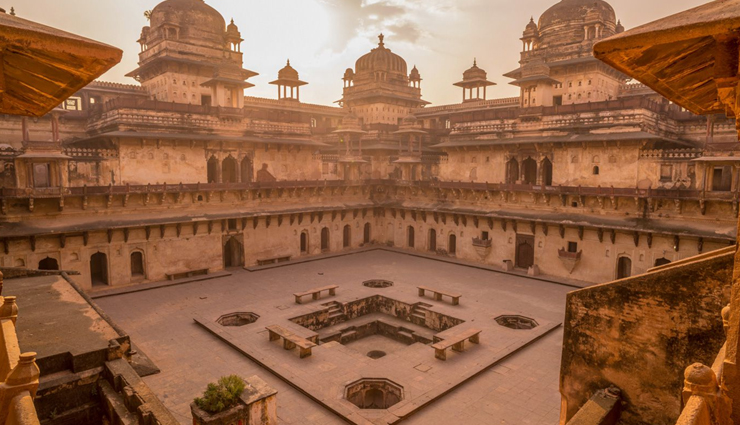5 Locations In Madhya Pradesh That Will Blow Your Mind
By: Priyanka Maheshwari Mon, 10 Aug 2020 3:29:57

Madhya Pradesh is rightly called the Heart of India, this beautiful and regal state does have what it takes to be the centre of a country as unique as India. Like the heart, which pumps the blood into our body keeping it alive and healthy, Madhya Pradesh is a life giving factor in our country. Here are some of the best historical places in Madhya Pradesh that will make you plan a trip soon to this undoubtedly beautiful state.

* Amarkantak
Amarkantak in Madhya Pradesh is an important pilgrim center for the Hindus and the source of the rivers Narmada and Sone. Holy ponds, hills, forests, and beautiful waterfalls make Amarkantak a sought-after destination for the religious as well as nature loving tourists. There are several stories about the origin of Amarkantak’s name. The famous Sanskrit poet, Kalidas named the place Amrakoot since the place contained lots of mango (amra) trees; later Amrakoot became Amarkoot. According to myths, when Lord Shiva destroyed Tripura by fire one of the three ashes fell on Amarkantak, which turned into thousands of shivalingas. One such linga is still worshipped at Jwaleshwar. Amarkantak also finds a mention in the Mahabharata, as one of the homes of the Pandavas during their exile.

* Sanchi
Sanchi is a small village in the Raisen district and is best known for its stupas and other Buddhist monuments. The stupas of Sanchi were built by Emperor Asoka in the 3rd century BC. The Great Stupa is considered to be the oldest stone structure of India and is also a UNESCO World Heritage Site. The glory of Sanchi can be experienced through the stupas and the rich carvings on its facade. In the 12th century AD Sanchi saw the establishment of most of its temples. The monuments of Sanchi slowly went into a state of despair with the decline of Buddhism in India. British General Mark Taylor rediscovered Sanchi in 1818. Under the guidance of Sir John Marshall restoration of the site commenced in 1912.

* Orccha
Orchha literally means ‘hidden place’ and it stays true to its name! Orchha isn’t on most tourist maps and several travelers club their visit to Orchha with a trip to Jhansi (16 km away) or Khajuraho (170 km away). But with beautiful monuments, both big and small, revealing tales of battles between kings and emperors, Orchha deserves a trip of its own. The smallest palace in Orchha (and one that is in ruins) is the Sunder Mahal that was constructed by Prince Dhurjban who embraced Islam after marrying a Muslim girl and devoted his life to prayer and meditation. Dhurjban eventually came to be revered as a saint and Sunder Mahal became a pilgrimage site for Muslims.

* Chanderi Fort
The Chanderi Fort is located in the small historical town of Chanderi in the Ashoknagar District. The Chanderi Fort is the most conspicuous monument in this ancient town. The Chanderi Fort dates back to the Mughal Period. The Muslim rulers took a lot of initiative to construct the fortification walls of the fort. The Maghals within the fort were built by the Bundela chiefs.

* Burhanpur
Burhanpur is a town that could have been on the world map but isn’t. Burhanpur is still a city of great architectural importance, but its fame rests largely as a pilgrimage for Bohra Muslims and Sikhs. The most interesting fact about this little town is that it was originally supposed to be home to the Taj Mahal. Mumtaz Mahal, in whose memory the Taj Mahal was built, died in Burhanpur while giving birth to her 14th child and the queen’s body rested here for several months until it was moved with the Mughal court to Agra where the Taj now stands! The site originally chosen for the Taj Mahal along the Tapti river still lies vacant, a silent reminder of the time that Burhanpur almost had a brush with history.





